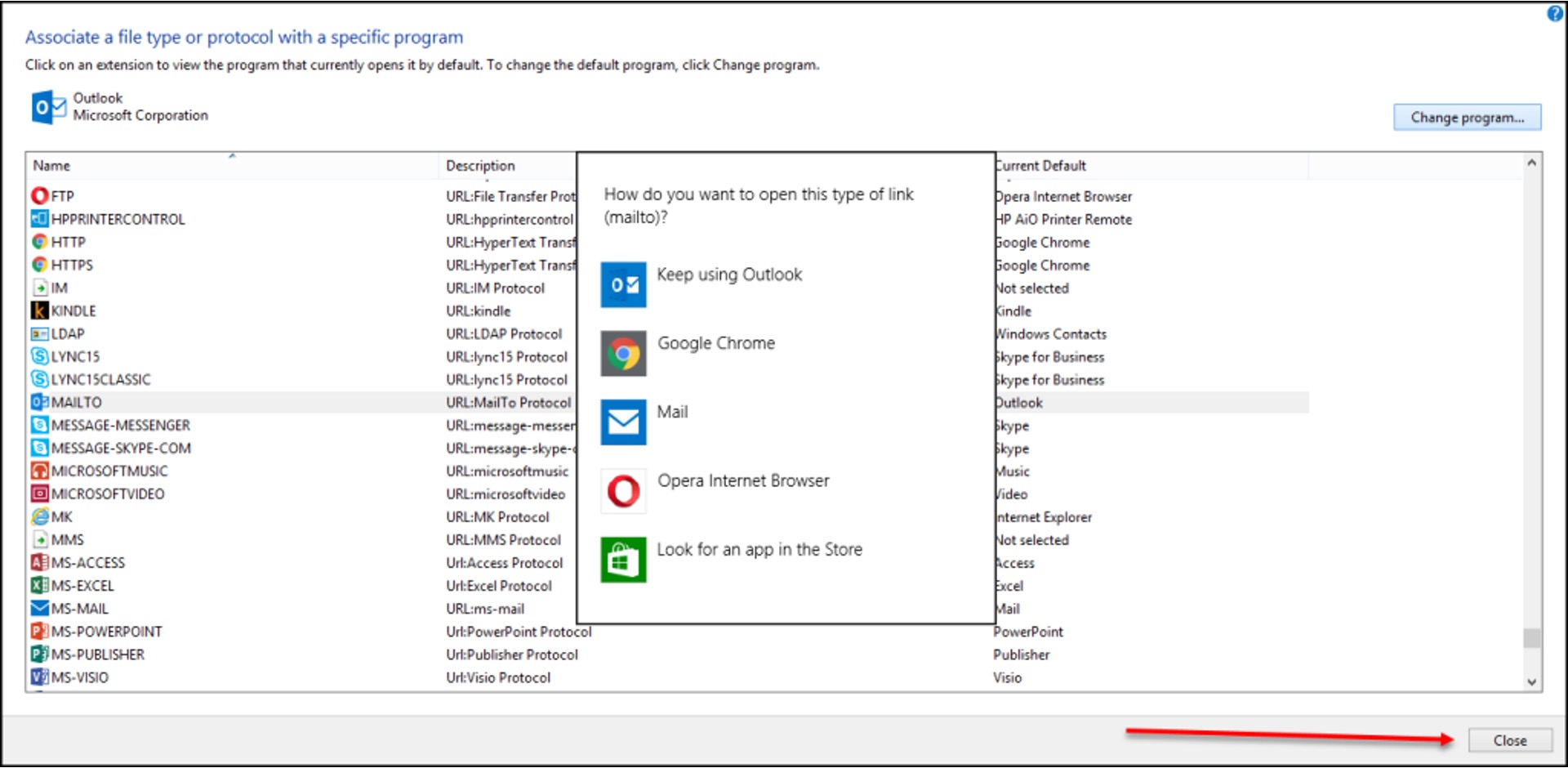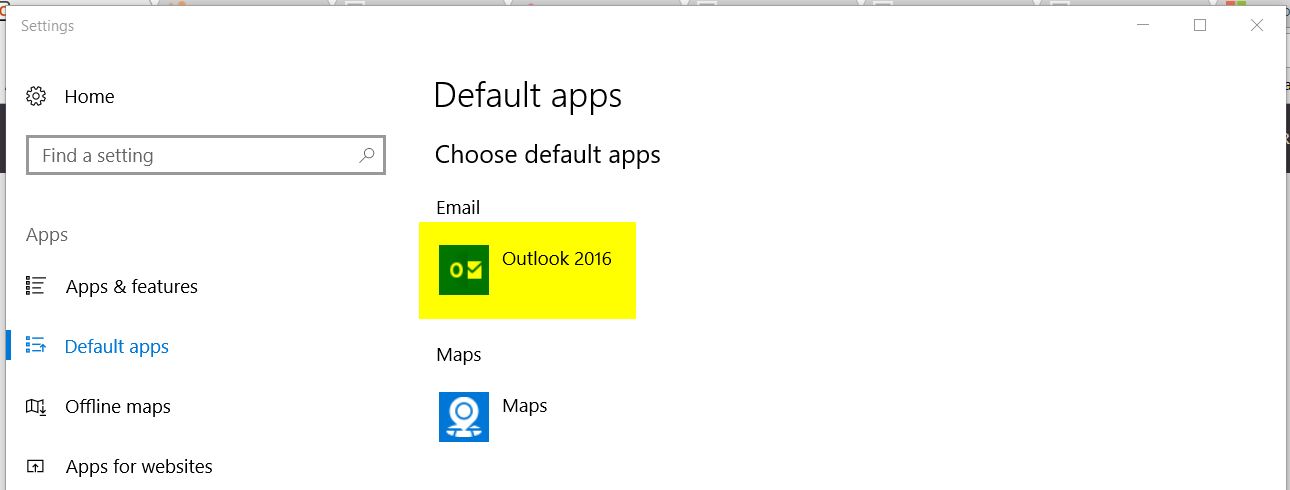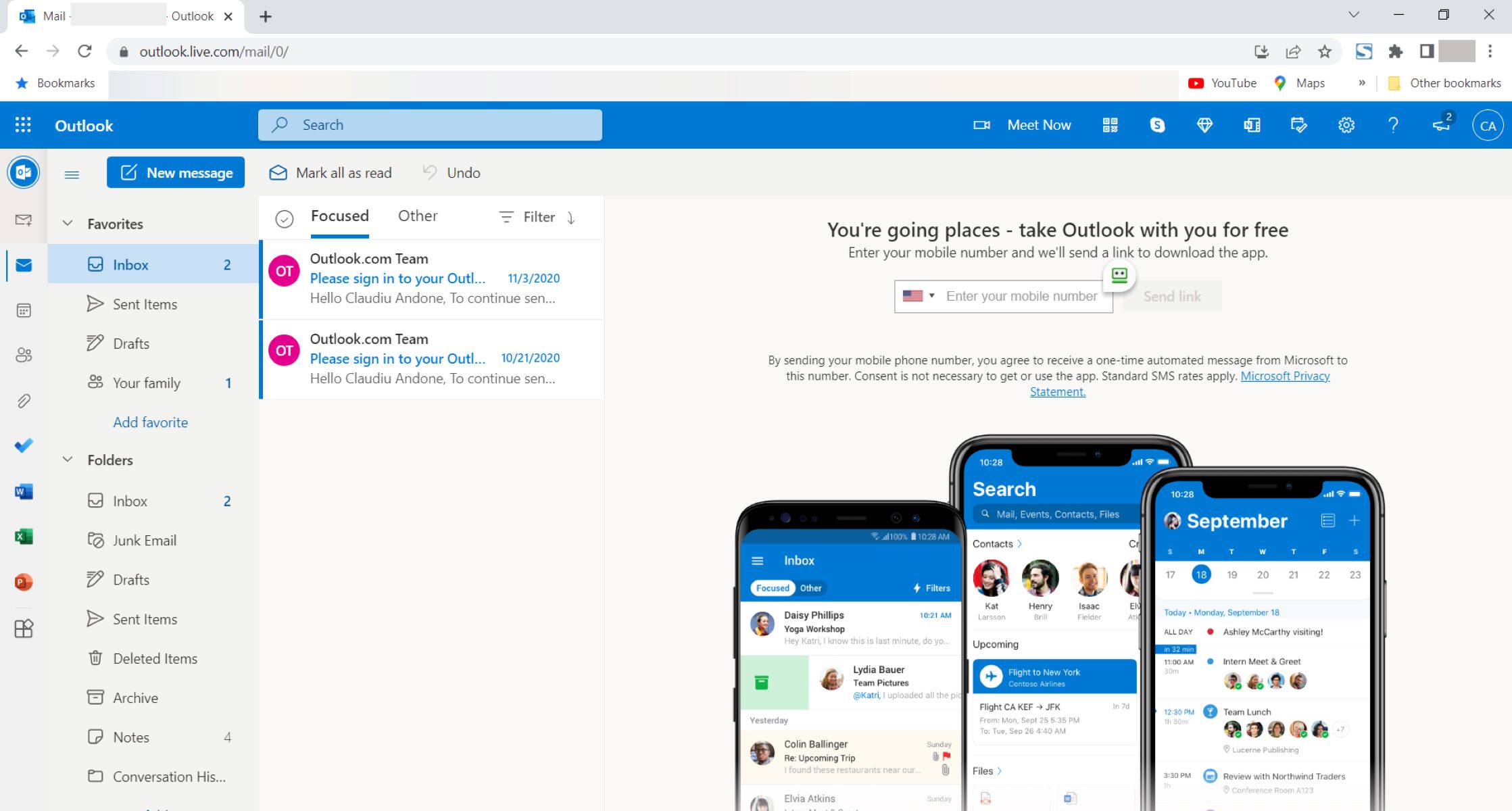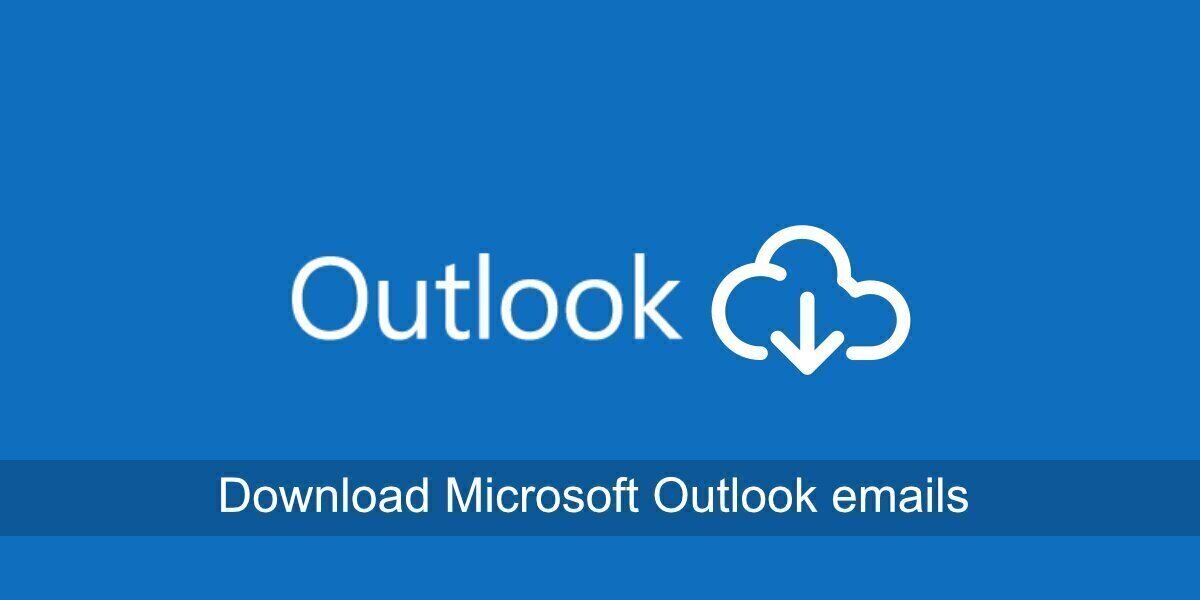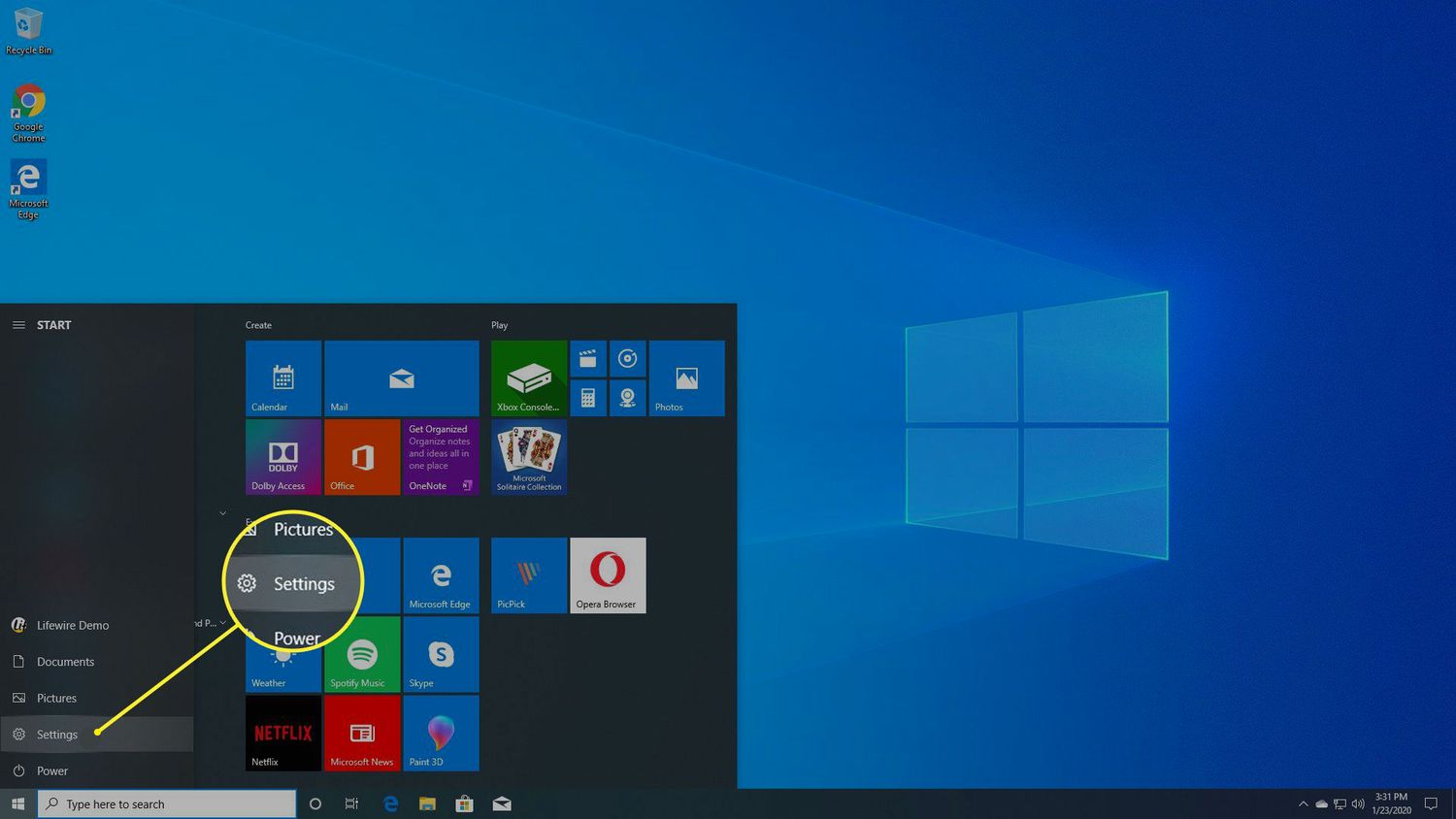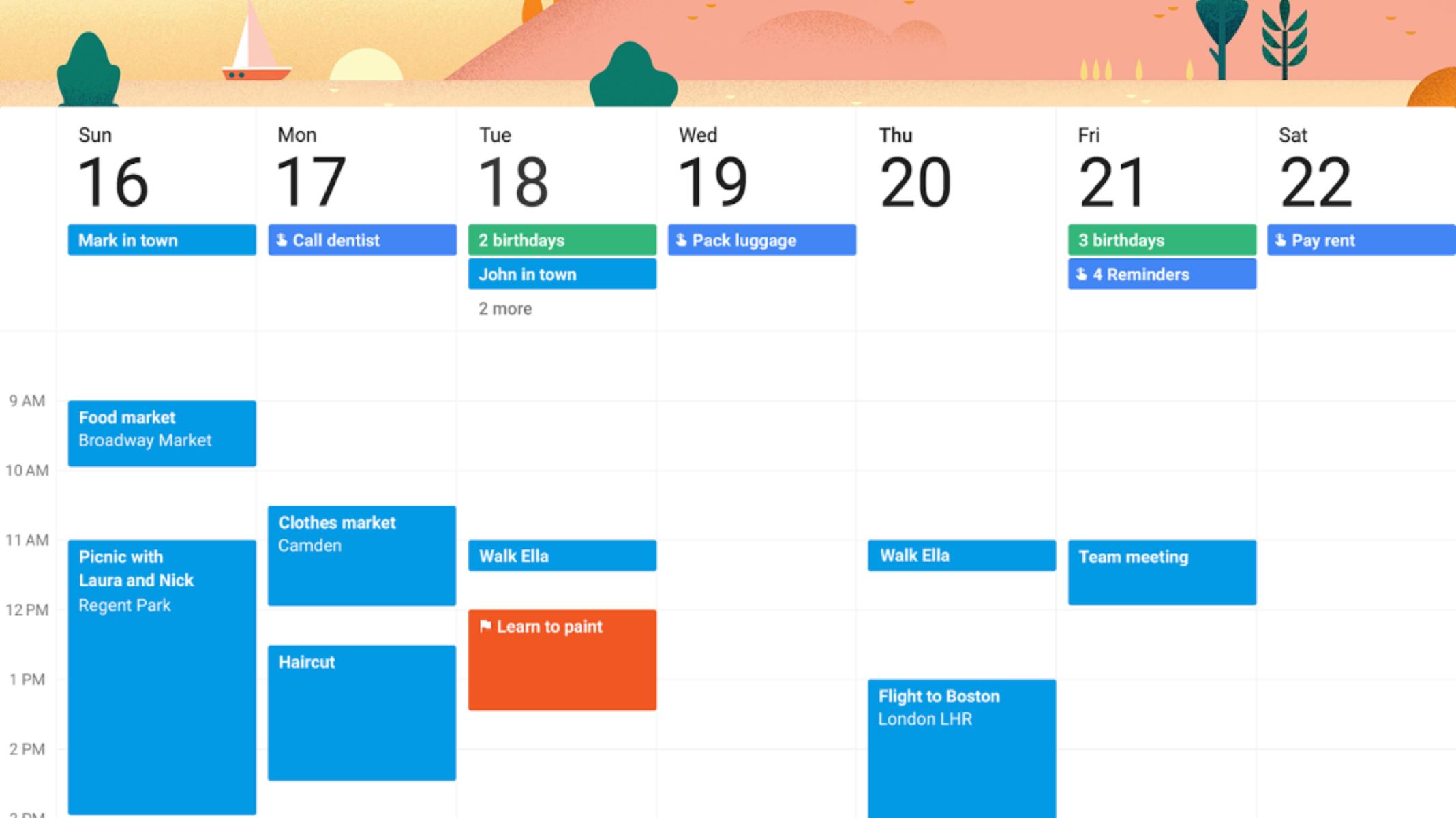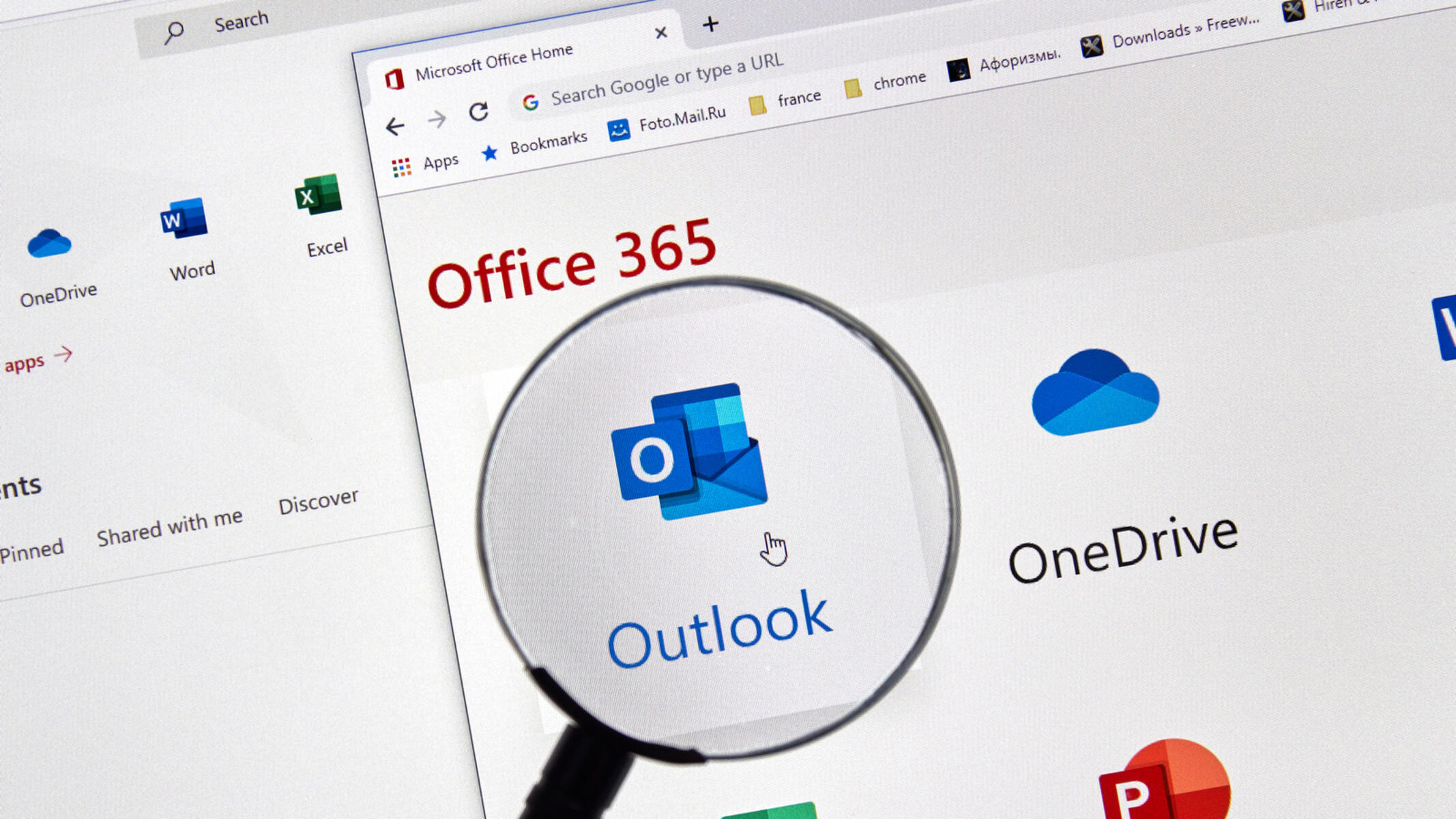Introduction
Are you a fan of using Google Chrome as your default web browser? Do you find it frustrating when Microsoft Outlook opens links in a browser other than Chrome? If so, you're not alone. Many users prefer the speed, simplicity, and versatility of Chrome, and they want their email client to seamlessly integrate with their preferred browser. Fortunately, changing the default browser for opening links in Outlook is a straightforward process that can be accomplished in just a few simple steps.
In this guide, we'll walk you through the process of changing the default browser for opening links in Microsoft Outlook to Google Chrome. By making this adjustment, you can ensure that all the links contained in your emails will open directly in Chrome, providing you with a more streamlined and efficient browsing experience.
So, if you're ready to bid farewell to the frustration of having to manually copy and paste links from Outlook into Chrome, let's dive into the step-by-step instructions for making this important change. Whether you're a seasoned tech enthusiast or a casual user looking to optimize your digital workflow, this guide will equip you with the knowledge and confidence to customize your Outlook settings and enhance your browsing experience. Let's get started!
Step 1: Open Outlook
To begin the process of changing the default browser for opening links in Microsoft Outlook, the first step is to launch the Outlook application on your computer. Whether you have a desktop shortcut, a taskbar icon, or access Outlook through the Start menu, go ahead and open the program to initiate the configuration process.
Upon opening Outlook, you will be greeted by the familiar interface, showcasing your inbox, folders, and various navigation options. Take a moment to ensure that you are logged into the correct email account, as the changes you make to the browser settings will apply to the selected account.
If you are using a Windows PC, you can typically find the Outlook application by clicking on the Start button in the lower-left corner of your screen. From there, you can navigate to the Microsoft Office folder and select the Outlook icon to launch the program. Alternatively, if you have pinned Outlook to your taskbar or desktop, simply click on the respective shortcut to open the application swiftly.
For Mac users, Outlook can be accessed through the Applications folder or the Dock, depending on your preferred method of organization. Locate the Outlook icon and click on it to initiate the application.
Once you have successfully opened Outlook, you are ready to proceed to the next step in the process of configuring the default browser settings. With the application launched and your email account selected, you are well-positioned to navigate through the necessary options and make the desired adjustments to ensure that links open in Google Chrome by default.
Now that you have successfully launched Outlook, let's move on to the subsequent steps that will guide you through the process of changing the default browser for opening links in Microsoft Outlook.
Step 2: Click on File
After successfully launching Microsoft Outlook, the next step in customizing the default browser for opening links is to navigate to the "File" tab located in the top-left corner of the Outlook window. The "File" tab serves as the gateway to various settings and options that allow users to manage their email accounts, customize preferences, and access essential configuration tools.
When you click on the "File" tab, a dropdown menu will appear, presenting a range of options that enable you to manage your account, organize emails, and adjust the application's settings. This menu serves as a central hub for accessing critical functions and preferences within Outlook, making it an essential starting point for making changes to the default browser settings.
Upon clicking on the "File" tab, you will be presented with a comprehensive list of options, including "New," "Open," "Save As," "Print," "Account Settings," and more. This menu is designed to provide users with quick access to essential features and settings, streamlining the process of managing emails and customizing the application to suit individual preferences.
By clicking on the "File" tab, you are taking the first step towards accessing the deeper layers of Outlook's configuration options, setting the stage for the subsequent steps that will guide you through the process of changing the default browser for opening links.
With the "File" tab now selected, you are poised to progress to the next step in this comprehensive guide, which will lead you closer to the ultimate goal of seamlessly integrating Google Chrome as the default browser for opening links in Microsoft Outlook. As you navigate through the intuitive interface of Outlook, you are well on your way to enhancing your browsing experience and optimizing your digital workflow.
Now that you have successfully clicked on the "File" tab, let's continue the journey towards customizing the default browser settings in Microsoft Outlook.
Step 3: Click on Options
After clicking on the "File" tab in Microsoft Outlook, the next crucial step in the process of customizing the default browser for opening links is to select the "Options" menu. This pivotal action will open up a window where you can access a plethora of settings and preferences, allowing you to tailor your Outlook experience to align with your specific needs and preferences.
When you click on "Options," a new window will appear, presenting you with a comprehensive array of customization options that span various aspects of the Outlook application. This window serves as the gateway to a wealth of settings, ranging from email management and layout preferences to security configurations and advanced features.
Within the "Options" window, you will find a series of tabs on the left-hand side, each representing a distinct category of settings. These tabs include "Mail," "Calendar," "People," "Tasks," "Search," "General," and more. Each tab offers a unique set of options and preferences, empowering you to fine-tune your Outlook experience according to your individual requirements.
By clicking on "Options," you are taking a significant stride towards accessing the underlying settings that govern the behavior of Microsoft Outlook. This pivotal action sets the stage for the subsequent steps that will guide you through the process of changing the default browser for opening links, ultimately leading you to seamlessly integrate Google Chrome as your preferred browser for handling links within Outlook.
As you navigate through the intuitive interface of the "Options" window, you are presented with a wealth of opportunities to personalize your email management experience, ensuring that it aligns perfectly with your workflow and browsing preferences. The ability to access and modify these settings empowers you to optimize your digital interactions and streamline your productivity within the Outlook environment.
With the "Options" window now open, you are poised to delve deeper into the settings that will enable you to designate Google Chrome as the default browser for opening links in Microsoft Outlook. This pivotal step brings you closer to achieving a seamless integration between your email client and web browser, enhancing your browsing experience and simplifying the process of accessing external links contained within your emails.
Now that you have successfully accessed the "Options" window, let's proceed to the subsequent steps that will lead you closer to the ultimate goal of customizing the default browser settings in Microsoft Outlook.
Step 4: Select Mail
After accessing the "Options" window in Microsoft Outlook, the next pivotal step in the process of customizing the default browser for opening links is to navigate to the "Mail" section. This critical action will direct you to a set of preferences specifically tailored to managing your email-related settings, providing you with the opportunity to fine-tune your email experience within the Outlook environment.
Upon selecting the "Mail" tab within the "Options" window, you will be presented with a range of configuration options that are designed to enhance your email management capabilities. These options encompass various aspects of email composition, delivery, and display, allowing you to personalize your communication experience to align with your unique requirements and preferences.
Within the "Mail" section, you will encounter a series of subcategories, each offering specific settings and preferences that cater to different facets of email management. These subcategories may include "Compose messages," "Stationery and Fonts," "Signatures," "Spelling and Autocorrect," "Save messages," and more. Each subcategory serves as a gateway to a distinct set of options, empowering you to customize your email composition and delivery processes according to your individual needs.
By selecting the "Mail" tab, you are taking a significant stride towards accessing the underlying settings that govern the behavior of your email interactions within Microsoft Outlook. This pivotal action sets the stage for the subsequent steps that will guide you through the process of changing the default browser for opening links, ultimately leading you to seamlessly integrate Google Chrome as your preferred browser for handling links within Outlook.
As you navigate through the intuitive interface of the "Mail" section, you are presented with a wealth of opportunities to personalize your email management experience, ensuring that it aligns perfectly with your workflow and communication preferences. The ability to access and modify these settings empowers you to optimize your digital interactions and streamline your productivity within the Outlook environment.
With the "Mail" section now selected, you are poised to delve deeper into the settings that will enable you to designate Google Chrome as the default browser for opening links in Microsoft Outlook. This pivotal step brings you closer to achieving a seamless integration between your email client and web browser, enhancing your browsing experience and simplifying the process of accessing external links contained within your emails.
Now that you have successfully accessed the "Mail" section within the "Options" window, let's proceed to the subsequent steps that will lead you closer to the ultimate goal of customizing the default browser settings in Microsoft Outlook.
Step 5: Under the "Compose messages" section, click on "Editor Options"
After navigating to the "Mail" section within the "Options" window in Microsoft Outlook, the next crucial step in the process of customizing the default browser for opening links is to delve into the "Compose messages" preferences. This pivotal action will lead you to the heart of email composition settings, providing you with the opportunity to fine-tune the way you create and format messages within the Outlook environment.
Upon entering the "Compose messages" section, you will encounter a range of options and preferences that are specifically tailored to the process of composing and formatting emails. These settings encompass various aspects of message composition, including text formatting, spell-checking, and other essential features that contribute to the overall email creation experience.
As you navigate through the "Compose messages" preferences, you will have the opportunity to customize the way you craft and present your emails, ensuring that they align with your personal style and professional requirements. The ability to access and modify these settings empowers you to optimize your email composition process, streamlining your communication efforts and enhancing the visual appeal of your messages.
Within the "Compose messages" section, you will find a series of subcategories, each offering specific settings and preferences that cater to different facets of email composition. These subcategories may include options for text formatting, message fonts, signatures, and more. Each subcategory serves as a gateway to a distinct set of options, empowering you to customize your email composition process according to your individual needs.
By clicking on "Editor Options" within the "Compose messages" section, you are taking a significant stride towards accessing the deeper layers of email composition settings that govern the behavior of your message creation process within Microsoft Outlook. This pivotal action sets the stage for the subsequent steps that will guide you through the process of changing the default browser for opening links, ultimately leading you to seamlessly integrate Google Chrome as your preferred browser for handling links within Outlook.
With the "Editor Options" now selected, you are poised to delve deeper into the settings that will enable you to designate Google Chrome as the default browser for opening links in Microsoft Outlook. This pivotal step brings you closer to achieving a seamless integration between your email client and web browser, enhancing your browsing experience and simplifying the process of accessing external links contained within your emails.
Now that you have successfully accessed the "Editor Options" within the "Compose messages" section, let's proceed to the subsequent steps that will lead you closer to the ultimate goal of customizing the default browser settings in Microsoft Outlook.
Step 6: Click on "Advanced"
After navigating through the "Compose messages" section and accessing the "Editor Options" within the "Mail" preferences in Microsoft Outlook, the next pivotal step in the process of customizing the default browser for opening links is to delve into the "Advanced" settings. This critical action will lead you to a realm of advanced configuration options, providing you with the opportunity to fine-tune intricate aspects of your email composition and overall Outlook experience.
Upon clicking on "Advanced," you will be presented with a comprehensive array of advanced settings and preferences that span various facets of the Outlook application. These settings encompass a wide range of options, including display, editing, autoformat, cut, copy, and paste, and more. Each option within the "Advanced" settings serves as a gateway to a distinct set of advanced configurations, empowering you to customize your email composition process and overall Outlook experience according to your individual needs and preferences.
Within the "Advanced" settings, you will encounter a series of subcategories, each offering specific advanced settings and preferences that cater to different facets of email composition and overall application behavior. These subcategories may include options for editing, display, cut, copy, and paste, and more. Each subcategory presents you with a unique set of advanced options, allowing you to tailor your Outlook experience to align with your specific requirements and preferences.
By clicking on "Advanced," you are taking a significant stride towards accessing the deeper layers of advanced settings that govern the behavior of your email composition process and overall Outlook experience. This pivotal action sets the stage for the subsequent steps that will guide you through the process of changing the default browser for opening links, ultimately leading you to seamlessly integrate Google Chrome as your preferred browser for handling links within Outlook.
With the "Advanced" settings now accessible, you are poised to delve deeper into the intricate configurations that will enable you to designate Google Chrome as the default browser for opening links in Microsoft Outlook. This pivotal step brings you closer to achieving a seamless integration between your email client and web browser, enhancing your browsing experience and simplifying the process of accessing external links contained within your emails.
Now that you have successfully accessed the "Advanced" settings, let's proceed to the subsequent steps that will lead you closer to the ultimate goal of customizing the default browser settings in Microsoft Outlook.
Step 7: Scroll down to the "General" section
After navigating through the advanced settings in the "Editor Options" within the "Mail" preferences in Microsoft Outlook, the next crucial step in the process of customizing the default browser for opening links is to scroll down to the "General" section. This pivotal action will lead you to a set of fundamental configurations that govern the general behavior of the Outlook application, providing you with the opportunity to fine-tune essential aspects of your overall Outlook experience.
As you scroll down to the "General" section, you will encounter a range of foundational settings and preferences that encompass various fundamental aspects of the Outlook application. These settings include options for user interface customization, startup behavior, and overall application behavior. Each option within the "General" section serves as a gateway to a distinct set of fundamental configurations, empowering you to customize your Outlook experience according to your individual needs and preferences.
Within the "General" section, you will find a series of subcategories, each offering specific settings and preferences that cater to different foundational facets of the Outlook application. These subcategories may include options for user interface customization, startup behavior, and overall application behavior. Each subcategory presents you with a unique set of fundamental options, allowing you to tailor your Outlook experience to align with your specific requirements and preferences.
By scrolling down to the "General" section, you are taking a significant stride towards accessing the foundational settings that govern the behavior of the Outlook application. This pivotal action sets the stage for the subsequent steps that will guide you through the process of changing the default browser for opening links, ultimately leading you to seamlessly integrate Google Chrome as your preferred browser for handling links within Outlook.
With the "General" section now in focus, you are poised to delve deeper into the foundational configurations that will enable you to designate Google Chrome as the default browser for opening links in Microsoft Outlook. This pivotal step brings you closer to achieving a seamless integration between your email client and web browser, enhancing your browsing experience and simplifying the process of accessing external links contained within your emails.
Now that you have successfully scrolled down to the "General" section, let's proceed to the subsequent steps that will lead you closer to the ultimate goal of customizing the default browser settings in Microsoft Outlook.
Step 8: Click on "Web Browser"
After navigating through the foundational settings in the "General" section of the "Editor Options" within the "Mail" preferences in Microsoft Outlook, the next pivotal step in the process of customizing the default browser for opening links is to click on "Web Browser." This critical action will lead you to the specific setting that governs the default web browser used for opening links within the Outlook application.
Upon clicking on "Web Browser," you will be presented with a dropdown menu or a selection interface that allows you to designate your preferred web browser for handling links within Outlook. This essential setting provides you with the opportunity to seamlessly integrate your chosen web browser, such as Google Chrome, as the default option for opening links contained within your emails.
The "Web Browser" setting serves as a pivotal bridge between your email client and web browsing experience, ensuring that external links embedded within your emails open directly in your preferred browser. By designating Google Chrome as the default web browser within this setting, you are taking a significant stride towards streamlining your browsing experience and enhancing the efficiency of accessing external web content from within Outlook.
As you click on "Web Browser," you are presented with the opportunity to align your email client with your preferred web browsing environment, ensuring a seamless transition between email interactions and web content consumption. This pivotal action sets the stage for the subsequent steps that will guide you through the process of finalizing the changes to the default browser settings, ultimately leading you to seamlessly integrate Google Chrome as your preferred browser for handling links within Outlook.
With the "Web Browser" setting now accessible, you are poised to make the crucial selection that will enable you to designate Google Chrome as the default browser for opening links in Microsoft Outlook. This pivotal step brings you closer to achieving a seamless integration between your email client and web browser, enhancing your browsing experience and simplifying the process of accessing external links contained within your emails.
Now that you have successfully clicked on "Web Browser," let's proceed to the subsequent steps that will lead you closer to the ultimate goal of customizing the default browser settings in Microsoft Outlook.
Step 9: Select "Google Chrome" from the dropdown menu
Upon reaching the "Web Browser" setting within the "Editor Options" of Microsoft Outlook, you will encounter a pivotal moment where you are presented with a dropdown menu or selection interface that holds the key to seamlessly integrating your preferred web browser for handling links within the Outlook application.
In this critical step, you will navigate through the dropdown menu and locate the option labeled "Google Chrome." As you select "Google Chrome" from the dropdown menu, you are making a decisive choice to designate this popular web browser as the default option for opening links contained within your emails.
By selecting "Google Chrome" from the dropdown menu, you are effectively aligning your email client with your preferred web browsing environment. This deliberate action ensures that all external links embedded within your emails will seamlessly open directly in Google Chrome, providing you with a streamlined and consistent browsing experience.
The selection of "Google Chrome" from the dropdown menu represents a significant stride towards enhancing the efficiency of accessing external web content from within Outlook. This choice empowers you to bridge the gap between your email interactions and web content consumption, facilitating a seamless transition between the two essential aspects of your digital experience.
As you make the selection, the integration of Google Chrome as the default browser for opening links within Microsoft Outlook comes to fruition. This pivotal decision brings you closer to achieving a cohesive and efficient browsing experience, where the boundaries between email communication and web exploration seamlessly converge.
With "Google Chrome" now designated as the default browser within the Outlook environment, you have successfully personalized your email client to align with your preferred web browsing preferences. This strategic customization empowers you to optimize your digital workflow, ensuring a seamless and consistent experience as you navigate through your emails and explore external web content.
By selecting "Google Chrome" from the dropdown menu, you have solidified the integration of your preferred web browser with Microsoft Outlook, enhancing your browsing experience and simplifying the process of accessing external links contained within your emails.
Step 10: Click "OK" to save the changes
After successfully selecting "Google Chrome" as the default web browser for opening links within Microsoft Outlook, the final and crucial step is to click "OK" to save the changes. This simple yet pivotal action ensures that your designated preferences are applied and integrated into the Outlook environment, solidifying the seamless transition between your email client and web browsing experience.
By clicking "OK," you are confirming and finalizing the adjustments made to the default browser settings within Outlook. This action serves as the definitive seal that ensures your chosen web browser, Google Chrome, is now the designated option for handling all external links contained within your emails.
As you click "OK," the settings window will close, and the changes you have made will be implemented, effectively integrating Google Chrome as the default browser for opening links within Microsoft Outlook. This decisive action signifies the completion of the customization process, marking the successful alignment of your email client with your preferred web browsing environment.
The significance of clicking "OK" lies in its ability to solidify the seamless integration between your email interactions and web content consumption. By saving the changes, you are ensuring a consistent and streamlined browsing experience, where external links embedded within your emails will effortlessly open directly in Google Chrome, providing you with a cohesive and efficient digital workflow.
Furthermore, clicking "OK" to save the changes represents the culmination of your efforts to personalize and optimize your Outlook experience. This action empowers you to navigate through your emails and explore external web content with ease, knowing that your preferred web browser is seamlessly integrated into the Outlook environment.
In essence, clicking "OK" serves as the final step in the process of customizing the default browser settings in Microsoft Outlook, ensuring that your chosen preferences are applied and upheld. By saving the changes, you have successfully tailored your email client to align with your preferred web browsing environment, enhancing your browsing experience and simplifying the process of accessing external links contained within your emails.
Conclusion
Congratulations! By following the step-by-step guide outlined in this comprehensive tutorial, you have successfully customized the default browser settings within Microsoft Outlook, seamlessly integrating Google Chrome as your preferred web browser for opening links contained within your emails. This strategic customization empowers you to optimize your digital workflow, ensuring a seamless and consistent experience as you navigate through your emails and explore external web content.
The process of changing the default browser for opening links in Outlook may seem intricate at first, but with the detailed instructions provided, you have gained the knowledge and confidence to tailor your email client to align with your preferred web browsing environment. By designating Google Chrome as the default browser, you have bridged the gap between your email interactions and web content consumption, facilitating a seamless transition between the two essential aspects of your digital experience.
With Google Chrome seamlessly integrated into the Outlook environment, you can now enjoy a streamlined browsing experience, where external links embedded within your emails will effortlessly open directly in your preferred browser. This not only enhances the efficiency of accessing external web content but also ensures a consistent and cohesive browsing experience, empowering you to navigate through your emails and explore web content with ease.
The ability to customize the default browser settings within Microsoft Outlook reflects your commitment to personalizing your digital interactions and optimizing your productivity. By saving the changes and finalizing the integration of Google Chrome, you have solidified a crucial aspect of your digital workflow, ensuring that your email client aligns perfectly with your preferred web browsing preferences.
As you continue to leverage the seamless integration between Microsoft Outlook and Google Chrome, you are well-equipped to navigate through your emails, access external web content, and engage with digital resources in a manner that aligns with your unique preferences and requirements. This strategic customization not only enhances your browsing experience but also simplifies the process of accessing external links contained within your emails, contributing to a more efficient and streamlined digital workflow.
In essence, the successful customization of the default browser settings within Microsoft Outlook represents a significant achievement, reflecting your proactive approach to tailoring your digital environment to suit your individual needs. By seamlessly integrating Google Chrome as the default browser for opening links, you have taken a decisive step towards optimizing your browsing experience and enhancing your overall digital productivity.







